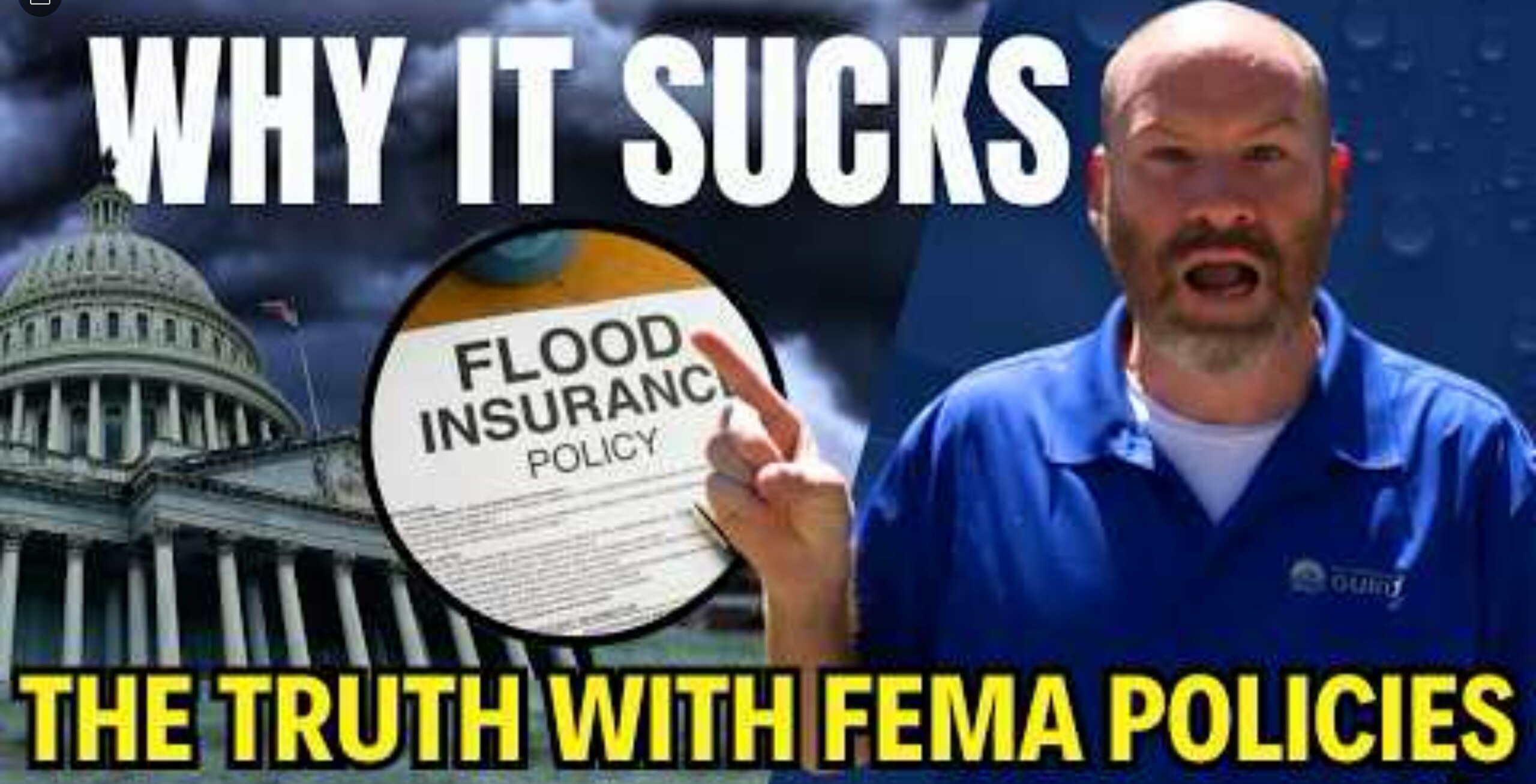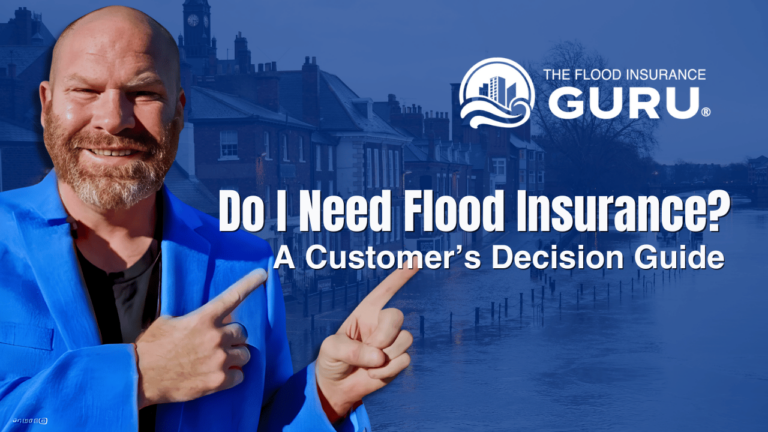Why Your National Flood Insurance Policy Might Not Protect You
3 Brutal Reasons Why Your National Flood Insurance Program Policy Could Fail You
Flood insurance is often considered the safety net for homeowners living in flood-prone areas. Many people believe that if their bank requires a National Flood Insurance Program (NFIP) policy, they are fully protected in the event of a flood. However, this assumption can be dangerously misleading. As someone who has navigated the complexities of flood insurance for over a decade, I can tell you firsthand that relying solely on a bank-mandated FEMA flood policy can leave you financially vulnerable when you need protection the most.
In this article, I will break down the three critical reasons why your NFIP policy might fail you, explain the hidden gaps that many homeowners overlook, and provide actionable steps you can take to ensure you are truly covered. Understanding these points is essential if you want to avoid unexpected out-of-pocket expenses after a flood event. Let’s dive in.
Understanding the National Flood Insurance Program and Its Limitations
The National Flood Insurance Program, administered by FEMA, was created to provide federally backed flood insurance to property owners in flood zones. While it has helped millions, its policies come with strict limits and conditions that many homeowners don’t fully understand. The NFIP hasn’t updated many of its coverage limits in decades, and its risk maps are often outdated, leaving many at risk despite having insurance.
Before we explore the reasons why your NFIP flood policy could fail you, it’s important to understand the difference between market value and rebuild cost. Many people confuse the two, assuming their flood insurance covers the full value of their home. This is not the case. Flood insurance policies are based on the cost to rebuild your home, not the market value, which can result in significant coverage gaps.
Reason 1: Outdated Coverage Limits Leave You Underinsured
One of the most brutal truths about the National Flood Insurance Program is that most banks only require $250,000 in FEMA coverage. This figure has not changed in decades, despite inflation and rising construction costs. If your home costs $385,000 to rebuild, you are facing a $135,000 gap in coverage. This means that in the event of a flood, you could be responsible for paying that difference out of pocket.
This gap is not just theoretical. Many homeowners are shocked to discover that their flood insurance payout is significantly less than what it costs to repair or rebuild their homes. FEMA’s maximum coverage limits for residential properties are $250,000 for the building and $100,000 for contents, but these amounts might be insufficient for many modern homes, especially those with higher rebuild costs or expensive contents.
Why banks require only $250,000
Banks typically require the minimum amount of flood insurance mandated by the NFIP because they are primarily concerned with protecting their loan investment. They are not responsible for ensuring you have adequate coverage to fully restore your home. This leads many homeowners into a false sense of security, believing they are fully covered when they are not.
The Real Cost of Being Underinsured
Imagine a flood damages your home, and your NFIP policy pays out $250,000. You still need to cover the remaining $135,000 to rebuild. This financial burden can be devastating, especially when you are already dealing with the aftermath of a flood. Being underinsured means you might have to take out loans, dip into savings, or delay repairs, all while facing the stress of displacement and loss.
Reason 2: Your Policy Likely Excludes Key Coverages
Another harsh reality is that many NFIP policies exclude important coverages that homeowners assume are included. Unless you explicitly ask for them or purchase endorsements, your flood insurance might not cover:
- Basement contents and improvements
- Detached garages and other outbuildings
- Temporary housing and additional living expenses
- High-end upgrades or custom finishes
- Personal contents inside your home
These exclusions mean that even if your home structure is covered, the things that make it a home might not be. Many people discover this gap only after filing a claim, when they realize their policy doesn’t cover the replacement of expensive personal belongings or the cost of living elsewhere while repairs are underway.
Why these exclusions matter
Flood damage often affects more than just the structure of your home. Basements can be completely ruined, forcing you to replace flooring, walls, and personal property stored there. Detached garages might contain tools or vehicles that are valuable. Without coverage for these items, you’re left paying out of pocket.
Similarly, if you need to relocate temporarily due to flood damage, the cost of temporary housing can add up quickly. Unfortunately, standard NFIP policies do not cover additional living expenses. This gap can create a financial strain during an already difficult time.
Reason 3: Outdated FEMA Flood Maps and Risk Rating 2.0 Lower Coverage While Increasing Risk
FEMA flood maps are the foundation for determining who needs flood insurance and at what cost. However, these maps are often outdated and don’t accurately reflect current flood risks. For example, flash floods are on the rise in areas like Arizona, but many of these regions are not classified as high-risk flood zones on FEMA maps.
Shockingly, 25% of all flood insurance claims come from properties located outside of FEMA’s designated high-risk areas. This means that many homeowners who think they are safe from flooding are not only vulnerable but may also lack any flood insurance coverage at all.
Risk Rating 2.0: A Double-Edged Sword
FEMA recently introduced Risk Rating 2.0, a new pricing methodology intended to make premiums more equitable by considering factors like flood frequency, distance to water, and property characteristics. While this has lowered premiums for some, it has also lowered coverage limits for others. This creates a false sense of savings but increases vulnerability because homeowners might choose cheaper policies with less coverage.
This change means that even those who have maintained their NFIP policies might find themselves underinsured without realizing it. The new rating system complicates an already confusing landscape, making it critical to review your policy carefully.
My Personal Experience: Why I Started The Flood Insurance Channel
When I bought my first FEMA flood policy, I thought I was fully covered. I didn’t understand the difference between replacement cost and actual cash value, didn’t know how elevation certificates impacted premiums, and had no contents coverage. This lack of knowledge cost me dearly when I had to file a claim. That experience motivated me to start The Flood Insurance Channel, where I help homeowners navigate these pitfalls and secure the right flood insurance coverage.
Through years of helping others, I’ve seen the same mistakes repeated over and over—assumptions that bank-required policies are sufficient, misunderstanding coverage limits, and overlooking critical exclusions. My goal is to empower you with the knowledge to avoid these costly errors.
What You Can Do to Protect Yourself
If you’re worried about whether your current National Flood Insurance Program policy truly protects you, here are three essential steps to take right now:
- Review Your Current Policy: Don’t assume your bank or mortgage servicer has ensured you are fully covered. Get a copy of your policy and read it carefully. Look for coverage limits, exclusions, and endorsements. Identify any gaps in coverage that could leave you exposed.
- Determine Your Home’s True Rebuild Cost: Market value isn’t the same as rebuild cost. Contact a professional appraiser or builder to get an accurate estimate of what it would cost to rebuild your home from scratch, including materials, labor, and permits.
- Book a Personalized Policy Review: Speak with a flood insurance expert who understands both FEMA policies and private flood insurance options. A personalized review can help you compare coverages, identify gaps, and explore alternatives that better fit your needs.
Why a Personalized Policy Review Matters
Flood insurance is not one-size-fits-all. Each home and homeowner has unique risks and needs. A personalized review allows you to:
- Understand exactly what your current policy covers and excludes
- Explore private flood insurance options that might offer higher limits or broader coverage
- Clarify confusing terms like elevation certificates, replacement cost, and actual cash value
- Make informed decisions about endorsements or additional coverage you may need
Taking these steps can mean the difference between financial security and devastating loss when floodwaters rise.
Why You Shouldn’t Rely Solely on Mortgage Requirements
Many homeowners think that if their mortgage lender doesn’t require flood insurance, they are safe without it. This couldn’t be further from the truth. Flood risks are evolving, and FEMA’s maps don’t always reflect current realities. With flash floods increasing and 25% of claims coming from outside designated flood zones, you could be at risk without even knowing it.
Ignoring flood insurance because it’s not mandated by your bank is a gamble that few can afford to take. Flood damage can happen anywhere, and recovery costs can be staggering. It’s better to be proactive and protect yourself with the right coverage.
How to Navigate the Confusing National Flood Insurance Program Landscape
The NFIP can be confusing, especially with recent changes like Risk Rating 2.0. If you don’t understand what your policy includes, your coverage limits, or how your premiums are calculated, you’re not alone. Many homeowners feel overwhelmed trying to make sense of FEMA’s policies and flood risk maps.
Here are some tips to help you navigate the NFIP and flood insurance in general:
- Educate Yourself: Learn the basics of flood insurance coverage, including terms like “replacement cost,” “actual cash value,” and “elevation certificate.”
- Stay Updated: Flood risk maps and policies change. Make sure you review your policy annually and stay informed about updates in your area.
- Consider Private Flood Insurance: Private insurers sometimes offer policies with higher limits and more flexible terms than the NFIP.
- Work With Experts: Consult with flood insurance specialists who can guide you through the process and recommend the best options for your situation.
Final Thoughts: Don’t Let a False Sense of Security Cost You
Your flood insurance policy should be a source of security, not uncertainty. The National Flood Insurance Program provides a critical service, but its policies have limitations that can leave you exposed if you’re not careful. Banks require only the minimum coverage, policies exclude important items, and outdated FEMA flood maps fail to capture the true risk.
By understanding these brutal truths, reviewing your current policy, knowing your home’s rebuild cost, and seeking expert guidance, you can protect yourself from financial devastation. Don’t wait until after a flood to discover that your insurance isn’t enough.
If you’re ready to take control of your flood risk and ensure you have the right coverage, start by getting a personalized flood insurance policy review. Knowledge is power, and in the world of flood insurance, it can be the difference between rebuilding your life or facing overwhelming loss.
Remember: Flood insurance is complex, but you don’t have to navigate it alone. Take the time to understand your policy and options today.

Information contained on this page is provided by an independent third-party content provider. This website make no warranties or representations in connection therewith. If you are affiliated with this page and would like it removed please contact editor @producerpress.com







